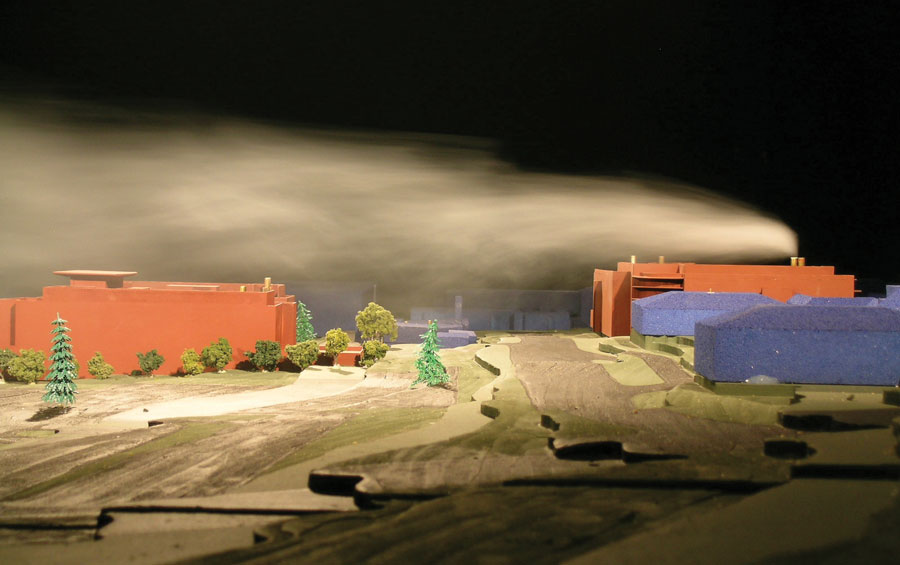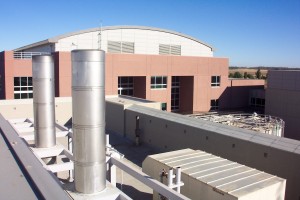News
Energy savings for new and existing labs
 University research centers, hospitals and other laboratories all share a common challenge: the need to exhaust contaminants safely and efficiently. Such facilities rely on exhaust stacks to disperse pollutants high in the atmosphere, where air currents carry them safely away from sensitive locations near the ground. But a stack’s ability to effectively remove pollutants depends upon the current wind conditions.
University research centers, hospitals and other laboratories all share a common challenge: the need to exhaust contaminants safely and efficiently. Such facilities rely on exhaust stacks to disperse pollutants high in the atmosphere, where air currents carry them safely away from sensitive locations near the ground. But a stack’s ability to effectively remove pollutants depends upon the current wind conditions.
Historically, exhaust systems relied on a constant volume approach, in which fans operate at a constant flow rate calculated to overcome the worst-case expected wind conditions. While this approach is conservative, it’s also wasteful and inefficient. Worst-case winds are rare events, and for most of a building’s operational life, a reduced volume flow rate meets health and odor criteria but consumes considerably less energy.
That’s where a variable air volume (VAV) system comes in. In a VAV system, exhaust fan flow rates adjust to actual conditions such that an unoccupied building on a calm night can get away with much less power than can a fully populated building on a windy day. The key is to know just how far you can reduce the fan speeds while still maintaining safe conditions for building occupants and downwind neighbors.
 Relying on a constant volume system is like driving in first gear at all times: powerful but inefficient. Employing a variable air volume exhaust, though, is like a high performance automatic transmission that constantly adjusts to external conditions to provide the needed power and energy efficiency.
Relying on a constant volume system is like driving in first gear at all times: powerful but inefficient. Employing a variable air volume exhaust, though, is like a high performance automatic transmission that constantly adjusts to external conditions to provide the needed power and energy efficiency.
CPP’s air quality engineers have a proven track record of helping clients save money with robust VAV exhaust protocols. We carefully evaluate a building’s specific layout and usage patterns to measure how building exhaust affects critical locations. We then combine this information with knowledge of the local wind climate and the exhaust fan characteristics to determine the operational limits of an effective VAV system. By relying on site-specific wind measurements, VAV can fine-tune systems to exhaust just the right amount of air for the current building load and wind conditions.
To learn how a robust VAV design can help your lab save energy and money, contact CPP’s air quality experts today. We’ll assess your facility’s unique requirements and suggest the right combination of consulting and testing for your needs. With a well-designed variable air volume exhaust system, your lab will meet its critical requirements while remaining safe, comfortable, and efficient.
